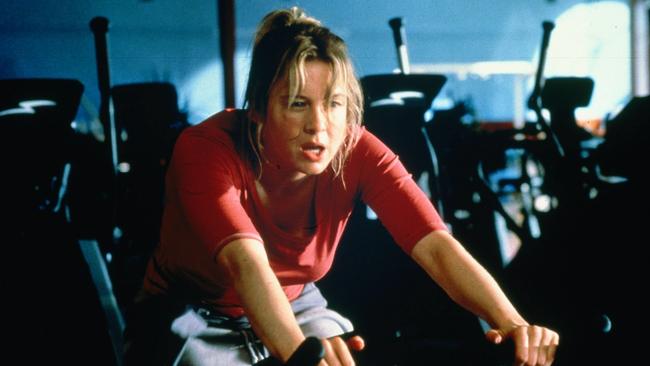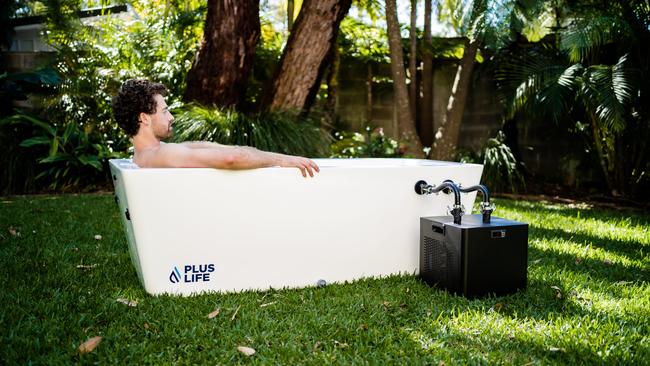The no pain, no gain mantra is a myth. Here’s how not to suffer
Sore muscles the day after exercise aren’t inevitable | Here are seven ways you can avoid what the experts call onset muscle soreness or the Doms.

If getting out of bed or walking downstairs has ever been a struggle after a gruelling or unfamiliar exercise session then you will know the pain of what sports scientists call delayed onset muscle soreness (Doms). Intense exercise stresses muscle enough to cause damage and microtears to fibres so that it adapts and grows back stronger. But pushing so hard that it results in Doms is unnecessary, says Rob Erskine, a reader in neuromuscular physiology at Liverpool John Moores University.
“It’s a bit of a myth that muscle soreness equates to better fitness progression,” he says. “We now know you don’t need that level of muscle discomfort to get progressively fitter.”
Feeling so sore that you shy away from workouts in the days or weeks afterwards is counterproductive, adds Dr Julie Hunt, a lecturer in sport and exercise sciences in the school of biosciences and medicine at the University of Surrey. “And when we look at people who have experienced a bigger muscle damage response to exercise, they do not see any bigger improvements in fitness over time than those who experienced less soreness. You don’t need to push to this level of pain.”
Doms is a two-phased response to exercise-induced muscle damage, which is why you may not feel the effects immediately. It can take two to three days for the after-effects of a workout to be felt. “Initially it’s the mechanical load of lifting weights or doing unfamiliarly intense activity that causes microtears in our muscle fibres,” Hunt says. “As a consequence, those fibres become more porous, which encourages an inflammatory response, and with that comes more oxidative stress on muscles.” The soreness we feel is a result of inflammation and swelling. “That then stimulates the sensory neurons in our muscle fibres and relays a pain sensation back to our brain that peaks around 24-72 hours after exercise. Depending on the level of muscle damage, the pain of Doms can last for anything from a day to a week.”
Lifting weights that are too heavy, attempting a spinning class beyond your fitness ability or running up and down hills are among the fastest routes to Doms. “Any sort of exercise done at a higher intensity or duration can cause muscle soreness,” Erskine says. “But eccentric movement in which muscles resist a load as they’re stretched, such as when you’re walking or skiing downhill or lowering heavy weights, is a common cause.”
A good warm-up, stretching before and after exercise and taking appropriate recovery days will all help to prevent Doms but, says Dr Lewis Macgregor, a lecturer in physiology and nutrition in sport at the University of Stirling, “the most effective way to avoid severe muscle soreness is by sticking to what scientists call ‘the repeated bout effect’. In practical terms this means a ‘little and often’ approach of starting with a relatively low volume of exercising, increasing the amount and intensity of it gradually and to do this consistently.” As to what else prevents Doms, here’s the experts’ opinions of the options:
1. Ice baths
Verdict: The jury is out
Cryotherapy and cold treatments are a huge trend in the recovery world even though the evidence supporting their benefit is conflicting. Some studies have shown that they help to reduce the perception of soreness and, by reducing body temperature, help to slow blood flow, swelling and inflammation in tissues of the muscles to aid recovery. But a study in the Journal of Physiology showed that, over time, post-workout ice baths may blunt some of the repair and rebuilding processes after resistance training. “While ice baths might reduce soreness a little there is evidence that they reduce muscle adaptation to training,” Macgregor says. “There’s a payback.”

2. Massage and massage guns
Verdict: Worth trying
While many people find massages helpful, “evidence that it works for everyone is inconclusive”, Macgregor says. However, a meta-analysis carried out by a team from the University of Sheffield and published in the journal BMJ Open Sport and Exercise Medicine showed that a 20 to 30-minute sports massage was associated with a 13 per cent improvement in the aches and pain of Doms.
Using a hand-held DIY massage gun - such as those by Theragun and Pulseroll - was shown to be “beneficial and useful” for alleviating post-workout muscle soreness in a study published in the Journal of International Medical Research.
3. Foam rollers
Verdict: The jury is out
Findings from a meta-analysis of 21 studies, published in Frontiers in Physiology, concluded that “evidence seems to justify the widespread use of foam rolling as a warm-up activity rather than a recovery tool”.
“There’s patchy science when it comes to using foam rollers, although some people swear by them,” Macgregor says. “Simple stretching is an option that is effective for many.”
4. Compression clothing
Verdict: Worth trying
Evidence that compression socks and sleeves (designed to apply pressure to the leg muscles so as to enhance blood circulation) help to relieve Doms is mixed, although in one study at Utrecht University more than 80 per cent of people who wore them after exercise said they believed compression garments worked. “Compression garments seem to be quite effective,” Macgregor says. “They are also a one-off investment, which is attractive for many people.”
5. Blackcurrant extract
Verdict: Worth trying
Blackcurrants are rich in anthocyanins, antioxidants present in red, blue and purple fruit and veg that can help to prevent inflammation. It therefore makes sense that they might help to relieve sore, inflamed muscles.
Hunt tested that theory in a study using a 300mg capsule of New Zealand blackcurrant extract - the equivalent to eating a large handful of fresh blackcurrants. She found that recovery of muscle function after exercise was three times faster than for a control group, and those who had taken the extract also experienced 49 per cent less muscle soreness 48 hours after working out.
“For athletes and the average person who wants to recover better, it’s a good one to try,” she says.
6. Omega-3 supplements
Verdict: The jury is out
For a study published last year in the European Journal of Sport Science, Macgregor gave a group of moderately fit men a 5g daily supplement of either omega-3 rich fish oils or a placebo capsule to see if it had any effect on improving muscle damage, inflammation and muscle soreness after eccentric strength training.
“We knew that omega-3 polyunsaturated fatty acids have an anti-inflammatory effect and can also be incorporated into the cell membrane of muscles,” Macgregor says. “What we wanted to see is whether supplementation with omega-3 fatty acids for around five weeks could make muscles a little bit more resilient to the damaging effects of exercise and the amount of Doms that results from doing heavy workouts.”
However, taking the pills for four weeks before a lab-based weights session and for three days afterwards, appeared to have no effect on Doms. “We had to conclude there was no beneficial effect,” Macgregor says.
7. Tart cherry juice shots
Verdict: Worth trying
An analysis of 14 studies by researchers at St Mary’s University, London, and Northumbria University published in the International Journal of Sport Nutrition and Exercise Metabolism found that taking Montmorency tart cherry - as a juice shot or capsule - has a significant effect on reducing reported Doms after exercise. “They contain high quantities of antioxidant phytochemicals that have been shown to produce anti-inflammatory effects in the body,” Hunt says.




To join the conversation, please log in. Don't have an account? Register
Join the conversation, you are commenting as Logout